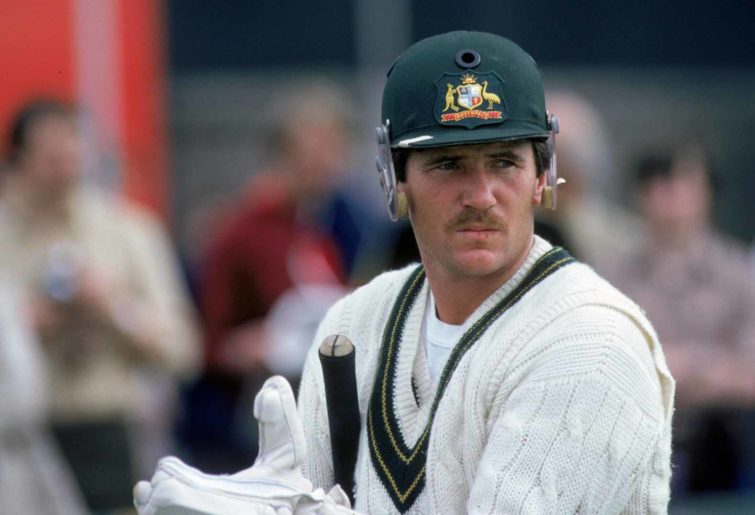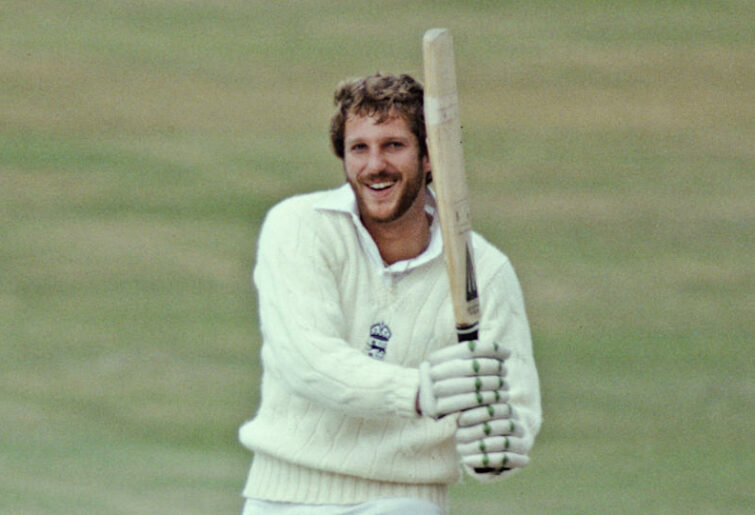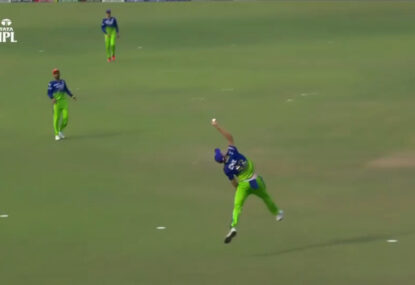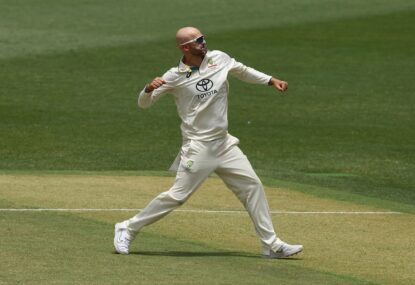In the history of Indian cricket, the summer of 1974 is known as the summer of 42 because in the second innings of the Lord’s Test, the Indian team was bowled out for only 42 runs. It is still India’s lowest ever Test score.
I often call the 1978-79 season the winter of 42 for Bangladesh cricket. In early January, at Mymensingh, north of Dhaka, our central zone team was bowled out for only 42 by the Sri Lanka attack.
In Ashes history, I would like to use the term summer of 29 with reference to the English team’s performance in 1989. Of course, the context here is entirely different. England didn’t get bowled out for 29, but rather they used 29 players in a desperate bid to stop the Australian domination.

(Adrian Murrell/Getty Images)
They lost the six-match series 4-0 and were grateful to the British weather that they were able to draw two Tests. Quite astonishingly, Australia used only 12 players in the series. All the Australian fans, irrespective of their age, are fairly familiar with the Australian performances during the series.
After being put into bat on the opening day at Headingley, the Australian team batted for more than two days to post a total of 600-plus. This started the domination of the Australian batsmen, which went all the way until the end of the series. All the top-order batsmen scored freely.
As for the bowlers, Terry Alderman was simply superb, Geoff Lawson changed gears in the second half of the series, and Merv Hughes in his first Ashes tour performed the third seamer’s job admirably.
Instead, here, I have tried to write the article from the England perspective. I would like to start with the positives.
The positives
Robin Smith, the South Africa-born batsman, emerged as the only shining light in England’s batting, scoring 553 runs at an impressive average of 61. For the most part, it was a lonely fight though, as his successive hundreds at Old Trafford and Trent Bridge failed to save his side. At least his 77 not out helped save the rain-affected sixth Test at the Oval.
When Australia declared their second innings on the final day there was little time for the bowlers to force a victory. Still, the Australian new-ball attack of Alderman and Lawson made quick breakthroughs before Smith steadied the ship.
A couple of seasons later, Smith fought bravely against the four-pronged West Indies attack. But despite an impressive batting average of 43, he only played 62 Tests for his adopted country. It seems strange to me, given that Graeme Hick with a modest Test average of 31 played 65 Tests.
Jack Russell was adjudged England’s player of the series. He kept it neat and clean behind the stumps as usual and scored more than 300 rubs with an average of almost 40, thanks mainly to 128 not out at Old Trafford and 64 not out at Lord’s, both for losing causes.
SOS to Ian Botham
Two-nil down going into the third Test and with rumours of a rebel tour, they were desperate times for English cricket. And desperate times call for desperate measures. So Ian Botham – who hadn’t played a Test for almost two years – got a recall.

(Photo by Adrian Murrell/Allsport/Getty Images/Hulton Archive)
He was well past his best, and in three Tests he failed to reach the 50 mark and picked up just three wickets. This was the end for Botham in the Ashes. However, he would torment the old enemy one more time: at a packed SCG during the 1992 World Cup, Botham with 4-31 and a 53 from 77 balls would lead England to a thumping eight-wicket win over the hosts.
Players who shouldn’t have been picked
Both Nick Cook and Chris Tavare got recalls from almost oblivion during the series. Cook didn’t do too badly at first, but his career ended after his wicketless effort in the final Test at the Oval. In Nottingham in he produced the figures of 40-10-91-3, not bad given that Australia scored 6-602.
Tavare’s case was even more interesting. Almost five years after playing against Sri Lanka at Lord’s, he was recalled at Edgbaston as a late replacement for Mike Gatting, who was unavailable. It was expected (or rather hoped) that he would bring some stability in the batting. It didn’t work. In his only innings he scored only two before giving Mark Taylor a slip catch off Alderman.
The debutants
Given the poor state of the England team, I found it quite surprising that they only gave debut to five players: a reflection of the lack of young talent in English cricket at the time.
Angus Fraser, the tall fast bowler from Middlesex, made his debut in the third Test, and made an immediate impact taking 4-63 in the first innings. Before the series was over, he became England’s main pace bowler. He, however, missed the final Test through injury, an event that would become fairly common during the ’90s. Nevertheless, he finished his Test career with 177 wickets from 46 Tests with a respectable average of 27.32.
With the series over, after the fourth Test, the England selectors finally looked at the future and gave Mike Atherton and Devon Malcolm their debuts in the fifth Test. Atherton had a bad start: he was out for a duck in the first innings, trapped LBW by Alderman. But he eventually became a highly reliable opening bat for his country.
The introduction of Devon Malcolm saw the famous Malcolm-Fraser combination working together for the first time for England. It wasn’t a happy beginning though, with the Aussie opening pair putting on 329 for the first wicket. Malcolm finished with 1-166 and was promptly dropped.
He, however, was rightly recalled for the West Indies tour in the winter. He was genuinely quick, but struggled for accuracy. Still, he was menace for the batsmen whenever he got his radar working, and had two ten-wicket hauls in Test cricket.
On to the Oval, and to the final Test of the summer. England were battered and bruised, and were just waiting for the summer to be over. They brought in two new players, Essex opener John Stephenson and Kent quick Alan Igglesden.
Igglesden played just three Tests for England, injury remaining a perennial problem from him. Stephenson can count himself unlucky to join the list of players to appear in just one Test. While his scores of 25 and 11 weren’t brilliant, he still outscored his county opening partner Graham Gooch in the match. But he was overlooked for the West Indies tour when Wayne Larkins was recalled.
Ted Dexter’s reign as chairman of the selectors had started badly and it would end following another bad Ashes defeat four years later. During this period, both David Gower and Botham would end their international careers.
But while England struggled badly against the old enemy during this period, there were some bright lights as well. Somewhat unexpectedly, they became quite competitive with the West Indies. They were unlucky to lose the 1990 series 2-1, but drew 2-2 at home in 91. In early 1992, they became the first team to win a Test series in New Zealand.
But then a loss in India in early 1993 followed by their first ever defeat against Sri Lanka showed the team’s weakness in technique against quality spin: a weakness that would be exploited cruelly by a spinner named Shane Warne for more than a decade.





































































































